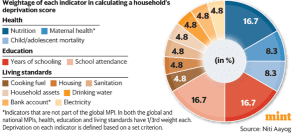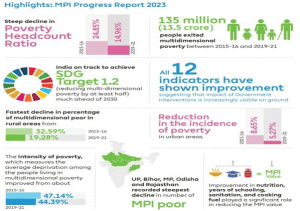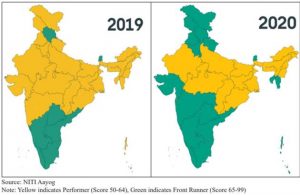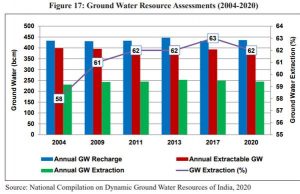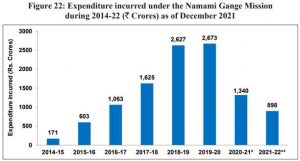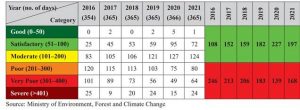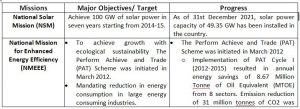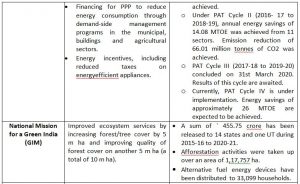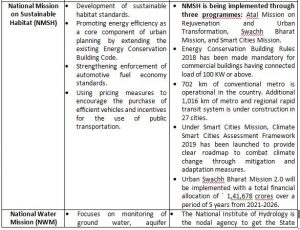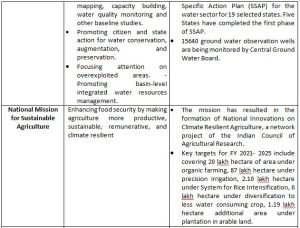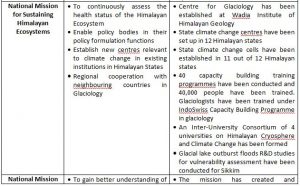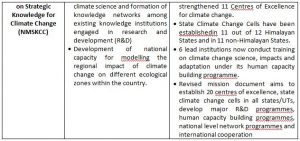THE HEALTH AND SOCIAL ISSUES
1. STUDY FLAGS POOR CONTROL OF BLOOD SUGAR IN INDIANS
THE CONTEXT: According to a recent paper published in the Lancet- Diabetes and Endocrinology, only over 7% of over 5,297 individuals in India with diabetes were able to achieve their blood sugar, blood pressure and cholesterol targets.
THE EXPLANATION:
- The latest results of the Indian Council of Medical Research (ICMR)-India Diabetes (INDIAB) study, conducted in 27 states (unified Andhra Pradesh), two Union Territories and the National Captial Territory over several rounds for the last decade, have stressed the need to have better control over various health parameters that impact mortality and quality of life.
- The report “Achievement of guideline recommended diabetes treatment targets and health habits in people with self-reported diabetes in India (ICMR-INDIAB-13): a national cross-sectional study” reasons that achievement of treatment targets remains sub optimal in India, in a pan-Indian study, and goes on to provide hints for shaping the health care response to the crises. The total sample size was 1, 13,043.
- Also, the study used Census data for population distribution, socio-economic factors. For the outcome assessment, good glycaemic control was defined as HbA1c of less than 7·0% (A), blood pressure control was defined as less than 140/90 mm Hg (B), and the LDL cholesterol target was defined as less than 100 mg/dL (C). ABC control was defined as the proportion of individuals meeting glycaemic, blood pressure, and LDL cholesterol targets together.
- Only just over 36 %, 95% CI 34·7–37·9) of 4834 people with diabetes achieved good glycaemic (blood sugar) control, over 48% achieved blood pressure control, and 41·5%, achieved good LDL cholesterol control.
Education matters
- Higher education, male sex, rural residence, and shorter duration of diabetes (under 10 years) were associated with better achievement of combined achievement of targets.
- The results of the study, of significance to each State, had been handed over to the respective State governments. There is also a plan to go back and study as a follow up, the participants who had been enrolled in the trial.
- Among the key interventions that the researchers indicated as possible at this stage, at a governmental level, is improving education about diabetes, and its attendant conditions, making health care easily available and accessible to all, and ensuring monitoring of the condition.
THE GOVERNMENT INTERVENTIONS AND POLICIES
2. NITI AAYOG RELEASES DRAFT BATTERY SWAPPING POLICY
THE CONTEXT: Government think-tank, Niti Aayog has prepared a draft battery swapping policy, under which it has proposed offering incentives to electric vehicles (EVs) with swappable batteries, subsidies to companies manufacturing swappable batteries, a new battery-as-a-service business model, and standards for interoperable batteries, among other measures.
THE EXPLANATION:
The policy is targeted at supporting the adoption of battery-swapping, primarily for battery swapping systems used in electric scooters and three-wheeler electric rickshaws.
What is battery swapping?
Battery swapping is a mechanism that involves exchanging discharged batteries for charged ones. This provides the flexibility to charge these batteries separately by de-linking charging and battery usage, and keeps the vehicle in operational mode with negligible downtime. Battery swapping is generally used for smaller vehicles such as two-wheelers and three-wheelers with smaller batteries that are easier to swap, compared to four-wheelers and e-buses, although solutions are emerging for these larger segments as well. |
What are some of the key proposals?
- The draft policy has suggested that the GST Council consider reducing the differential across the tax rates on Lithium-ion batteries and electric vehicle supply equipment. Currently, the tax rate on the former is 18 per cent, and 5 per cent on the latter.
- The policy also proposes to offer the same incentives available to electric vehicles that come pre-equipped with a fixed battery to electric vehicles with swappable batteries. “The size of the incentive could be determined based on the kWh (kilowatt hour) rating of the battery and compatible EV,” the draft policy states.
- The government will also specify a minimum contract duration for a contract to be signed between EV users and battery providers to ensure they continue to provide battery swapping services after receiving the subsidy.
- The policy also requires state governments to ensure public battery charging stations are eligible for EV power connections with concessional tariffs. It also proposes to bring such stations under existing or future time-of-day (ToD) tariff regimes, so that the swappable batteries can be charged during off-peak periods when electricity tariffs are low.
- Transport Departments and State Transport Authorities will be responsible for easing registration processes for vehicles sold without batteries or for vehicles with battery swapping functionality. Municipal corporations will be responsible for planning, zoning permissions and land allocation for battery swapping stations.
- The policy also proposes to assign a unique identification number (UIN) to swappable batteries at the manufacturing stage to help track and monitor them. Similarly, a UIN number will be assigned to each battery swapping station. It also proposes to install battery swapping stations at several locations like retail fuel outlets, public parking areas, malls, kirana shops and general stores etc.
Does the draft policy talk about EV safety?
- To ensure a high level of protection at the electrical interface, a rigorous testing protocol will be adopted, the draft said, to avoid any unwanted temperature rise at the electrical interface. The battery management system, which is a software that controls battery functions, will have to be self-certified and open for testing to check its compatibility with various systems, and capability to meet safety requirements, it added.
- “Batteries shall be tested and certified as per AIS 156 (2020) and AIS 038 Rev 2 (2020) standards for safety of traction battery packs, as well as additional tests that may be prescribed for swappable batteries which are subject to multiple coupling/decoupling processes at the connectors,” the draft said.
- Additionally, for better protection of assets, swappable batteries will have to be equipped with advanced features like IoT-based battery monitoring systems, remote monitoring and immobilisation capabilities.
- The Aayog has proposed that all metropolitan cities with a population of more than 40 lakh will be prioritised for the development of battery swapping networks under the first phase, which is within 1-2 years of the draft policy getting finalised. Other major cities such as state capitals with a population greater than 5 lakh will be covered under the second phase.
THE ECONOMIC DEVELOPMENTS
3. DEFENCE MINISTER ROLLS OUT SCHEMES FOR DEFENCE START-UPS
THE CONTEXT: In a bid to support Indian startups, Defence Minister has launched the sixth edition of the Defence Indian Startup Challenge (DISC) under the iDEX programme.
THE EXPLANATION:
- In this challenge, the Ministry of Defence (MoD) will be backing startups that can offer software solutions such as Artificial Intelligence (AI), advanced imaging, sensor systems, big data analytics, autonomous unmanned systems and secured communication systems to the Indian military.
- Under this challenge, MoD aims to support Indian startups by offering financial assistance in the range of INR 1.5 Cr to INR 10 Cr.
- Seven newly-formed defence companies, the Indian Coast Guard, organisations working under the Ministry of Home Affairs, three services and some defence public sector undertakings are heading the challenge.
- In the fifth edition of the DISC challenge, startups and innovators were asked to resolve 35 problem statements (PS) from armed forces and OFB/DPSUs. These challenges were real-life problems faced by the Indian Army, Indian Airforce, Indian Navy, HAL, BEL, HSL, MDL, MIDHANI, and GRSE.
VALUE ADDITION:
- Defence India Startup Challenge, was launched under the iDEX initiative, by MoD and Atal Innovation Mission. It aims to support Indian startups, MSMEs and innovators that create prototypes, commercial products and solutions in the defence and aerospace sector.
- Founded in 2018, iDEX engages MSMEs, startups, individual innovators, R&D initiatives and academia and provides them financial assistance to create tech solutions that can be adopted by defence and aerospace sect.
4. INDIANS NOW MAKE PAYMENTS USING UPI IN UAE
THE CONTEXT: Tourists or migrants to the United Arab Emirates (UAE) with Indian bank accounts will be able to make UPI payments at shops, retail establishments and other merchants in the gulf nation. This is possible because of the partnership between the National Payments Corporation of India (NPCI) and the Mashreq Bank’s NEOPAY.
THE EXPLANATION:
How does the service work?
- It will be mandatory for users to have a bank account in India with UPI enabled on it. The users will also need an application, like BHIM, to make UPI payments.
- “With the acceptance of BHIM UPI in the UAE, Indian tourists can now make seamless payments through BHIM UPI across NEOPAY enabled shops and merchant stores. This partnership will play a key role in transforming the P2M payment experience for Indian travellers in the UAE.
- The implementation of BHIM UPI in the UAE is a stepping stone toward providing a major boost to digital payments in the country”.
- Payments using UPI will only be accepted at those merchants and shops which have NEOPAY terminals.
Does NPCI have other such international arrangements?
- NPCI’s international arm NIPL have several such arrangements with international financial services providers for its products, including UPI and RuPay cards. Globally, UPI is accepted in Bhutan and Nepal, and is likely to go live in Singapore later this year (2022).
- In Singapore, a project to link UPI with the city-state’s instant payment system Pay Now is being undertaken by the RBI and the Monetary Authority of Singapore. The linkage is targeted for operationalisation by July 2022.
- Even though the UAE arrangement only allows for Indians to make payments, in Singapore’s case, the UPI-Pay Now linkage will enable users of each of the two fast payment systems to make instant, low-cost fund transfers on a reciprocal basis without a need to get on-boarded onto the other payment system.
THE DEFENCE TECHNOLOGY
5. RUSSIA’S NEW NUCLEAR MISSILE SARMAT, CAPABLE OF STRIKING ‘ANYWHERE IN THE WORLD’
THE CONTEXT: Amidst stiff resistance from Ukraine in the ongoing war and harsh sanctions imposed by the West, Russia went ahead and tested its new Inter Continental Ballistic Missile (ICBM) Sarmat.
THE EXPLANATION:
- This was the first test launch of the ICMB Sarmat after having been delayed earlier in 2021. It was launched from Plesetsk in North West Russia with the intended target in the Kamchatka peninsula almost 6,000 km away.

- As per Russian news reports, the missile will have at least five more launches in 2022 before being inducted into the Russian military. Prior to the actual launch, a dummy missile test also took place. Computer simulated missile launches were also done multiple times and some of them were also shared publicly.
Was Russia known to be developing this missile?
- It was widely known that Russia was developing a new ICBM to replace its older ones and an announcement in this regard had been made by President Vladimir Putin in 2018 while making his State of the Nation address to the Federal Assembly.
- Even before Putin’s announcement, there had been reports that Moscow was developing a new ICBM and photos of the possible design came into the fore in 2016. The actual development schedule is believed to have been further back in 2009 to 2011. The deteriorating relations between Russia and the Western Powers is said to have given an impetus to its development.
How is it more advanced than the other Russian ICBMs?
- The RS-28 Sarmat (NATO name Satan-II) is reported to be able to carry ten or more warheads and decoys and has the capability of firing over either of the earth’s poles with a range of 11,000 to 18,000 km. It is expected to pose a significant challenge to the ground-and-satellite-based radar tracking systems of the western powers, particularly the USA.
- The ten warheads are Multiple Independently-Targetable Re-entry Vehicles and each has a blast yield of .75 MT. The Sarmat will also be the first Russian missile which can carry smaller hypersonic boost-glide vehicles.
- These are manoeuvrable and hard to intercept. The upgraded electronic counter measures, guidance systems and alternative warhead carrying capacity makes the RS-28 Sarmat ICBM more lethal than the R-36M Voyevoda ICBMs (NATO name Satan) currently in service in Russia.
- The Sarmat is a liquid fuelled missile as compared to US ICBMs which have moved on to solid fuel systems. Regardless of the different propulsion system, the Sarmat is supposed to pose a significant threat to the US Missile Defence Systems.
NEWS IN NUMBERS
6. OIL MEAL EXPORTS PLUNGE
According to a statement by the Solvent Extractors’ Association of India, 37 percentage, the decline in India’s oil meals exports to rs 5,600 crore in the financial year 2021-22, The exports declined in the last fiscal due to lesser overseas shipment of soybean meal, which plunged to 3,72,740 tonnes in 2021-22 from 15,64,833 tonnes a year ago. At present, Indian soybean meal is over-priced for exports as the rate is at $840 per tonne in comparison to $574 and $586 for each tonne of shipments originating from Brazil and Argentina.
7. POWER SHORTAGE IN STATES
The 12 States to face energy crisis amid low coal stock to fire thermal power plants, according to the All India Power Engineers Federation (AIPEF). The AIPEF has drawn the attention of Central and State governments towards the depleting coal inventory of domestic thermal power plants. While there was 1.1% power shortage in October 2021, this shortfall shot up to 1.4% in April 2022. States like Andhra Pradesh, Maharashtra, Gujarat, Punjab, Jharkhand and Haryana are facing power cuts.
| Major Coal Producing states
In FY 2020-21, Chhattisgarh registered highest coal production of 158.409 MT, followed by Odisha 154.150 MT, Madhya Pradesh 132.531 MT, and Jharkhand 119.296 MT. India’s total coal production registered a marginal decline of 2.02% to 716.084 million tonnes during the last FY 2019-20. |
8. EXTENSION GRANTED FOR BORDER CROSSING
According to Pakistan Foreign officer, 2 Months, the extension given by Pakistan to India for the transportation of 50,000 metric tonnes (MTs) of wheat and life-saving medicines to war-torn Afghanistan via the Attari-Wagah border crossing. The officer informed that the time period granted had expired on March 21,2022 but accepting the request made by the Government of India the time has been extended. Pakistan, in November 2021, had approved the transportation of humanitarian assistance from India to Afghanistan via the Wagah border.
THE PRELIMS PRACTICE QUESTIONS
QUESTION OF THE DAY
Q Which of the following are the guiding principles of NITI Aayog?
- Governance
- Federalism
- Sustainability
- People’s Participation
- Democracy
Select the correct answer using the code given below:
a) 1, 2 and 3 only
b) 1, 3 and 4 only
c) 1, 3, 4 and 5 only
d) All of them
ANSWER FOR 22ND APRIL 2022
Answer: A
Explanation:
Gotipua is a traditional dance form in the state of Odisha, India, and the precursor of Odissi classical dance. It has been performed in Orissa for centuries by young boys, who dress as women to praise Jagannath and Krishna. In the Odia language, Gotipua means ‘single boy’.
